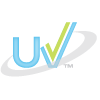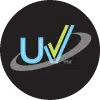FAQ
UVC light is a type of ultraviolet light which is a type of electromagnetic radiation. According to the World Health Organization, “UV radiation spectrum is divided into three regions called UVA, UVB and UVC… The three types of UV radiation are classified according to their wavelength. Short-wavelength UVC… is completely filtered by the atmosphere and does not reach the earth’s surface” and it is the most powerful of the three when something is exposed in close ranges with it. And because it’s the most harmful UV ray of the three, it can be used for purification because of its powerful ability to disintegrate the nucleic acids in the cells of microorganisms. This includes viruses, bacteria, and spores as well as other microorganisms attacking them at the DNA level which viruses and bacteria can’t develop tolerance to like they do with antibiotics.
Source: https://www.who.int/news-room/q-a-detail/ultraviolet-(uv)-radiation
UVC is powerful against many viruses including SARS-CoV-2 (COVID-19), SARS-CoV-1, Tuberculosis and H1N1 to name a few. With proper UVC light placement, pathogens can be eliminated from the air passing through HVAC units if they are in contact long enough with the UVC light.
UVC can eliminate many types of molds, spores, bacteria, viruses as well as other microorganisms when available at appropriate dosages. For a complete list of pathogens with disinfection rates, visit our Air Disinfection Efficiency page.
According to the FDA, “UVC radiation can cause severe burns (of the skin) and eye injuries (photokeratitis)” when directly exposed. Although these effects are reversible, it is important to always have protection wear or protection barriers in place in order to avoid direct contact with UVC rays. UV Diffusers have been specially designed to contain the UVC light within the diffuser to ensure building occupants’ safety.
UV light is electromagnetic radiation, light just beyond the visible spectrum. UV light is invisible to the naked eye; you can’t see it.
The blue light that you see is created along with UVC by the mercury light bulb. It is not UVC and it is more easily reflected by surfaces than UVC. This is why UVC is contained in the diffuser while some blue light still passes through the filter, resulting in a safe blue glow.
Northeast Waste Management Officials’ Association “Newmoa”, a non-profit organization addressing pollution prevention, explains:
“Mercury is used in a variety of light bulbs and is useful in lighting because it contributes to the bulbs’ efficient operation and life expectancy… They produce light when an electric current passes between two electrodes…The electric current excites the mercury vapor in the tube, generating radiant energy, primarily in the ultraviolet (UV) range. The energy causes a phosphor coating on the inside of the tube to “fluoresce,” converting the UV light into visible light.”
This is why we can see a blue light glowing from UV diffusers.
Sources:
http://www.newmoa.org/prevention/mercury/imerc/FactSheets/lighting.cfm
https://scied.ucar.edu/ultraviolet-uv-radiation
https://www.ceenta.com/news-blog/why-cant-i-see-infrared-or-ultraviolet-light
With the current pandemic infiltrating the workplace, more and more offices, schools and public spaces will need to upgrade their current ventilation methods within a building and incorporate new air purifying equipment or techniques to ensure the health of employees and people coming in and out of the workplace. The role that air diffusers have is important in order to achieve this. They need to properly distribute and mix air within an area effectively to ensure that the air is being changed out for new air. Unfortunately, many existing air diffusers in the market and in existing buildings fall short in terms of performance and cannot do this very effectively making it risky for people to become exposed to viruses, allergens, and other contaminants. With the new ASHRAE requirements, HVAC diffusers with good performance are more important than ever before amid the current pandemic to ensure that new, clean air is being properly mixed into a room eliminating the risk for further contamination and contagion. EffectiV’s UV Diffusers are designed to combine both great performance with top grade air purification methods to ensure clean and safe air everywhere in the building!
UV Diffusers were designed to fit to fit most existing HVAC systems in buildings so there’s no hassle with installation and it’s more cost effective than changing out the entire system. It’s also a lot more economical to install UV Diffusers than using 100% outdoor air in your building.
Different models of UV Diffusers perform optimally in different air volume brackets ranging anywhere between 50 cfm and 550 cfm. Low efficiency pleated filters combined with UV lamp add limited extra pressure on the system, which can be handled by most systems without modifying or upgrading the equipment*. Data sheets with complete performance data are also available for new designs.
*Capacity varies for every system, verify first with your contractor or mechanical engineer.
Unfortunately, UV diffusers are currently designed for commercial building HVAC systems and not for residential type ventilation systems. Fortunately, residential requirements for airflow and filtration are much less than commercial requirements, and multiple good solutions already exist for residential use.
The dimensions that are currently available are 24″ x 24″ inches for regular 2′ x 2′ tile false ceilings. They can also be installed in drywall with the use of drywall frames.
They come with duct adapters to connect to 6”, 7”, 8”, 10” or 12” round duct.
Yes. In short, a certified technician will need to work with a professional electrician to properly install these UV Diffusers.
There is a 1 year limited warranty against manufacturing defects.
On the UVC light bulb, you have 2 years from the date of purchase AND broken quality control seal. Please ensure that the bulb isn’t physically damaged before breaking the quality control seal to be able to exchange it or get a full refund (plus possible shipping fees and re-stocking fees, if not defective). It is also important to keep the box as you will need to return the defective light bulb in its original packaging.
The UVC light bulbs are designed to last up two years. After 2 years their efficiency drops and they must be replaced. Please note that this information applies to UV Diffusers only. Most UVC bulbs in other products must be changed yearly.
No. It is recommended to only use UVC type lamp bulbs from EffectiV HVAC to ensure proper air sanitation, correct size and proper use of the UVC Diffuser. Using alternative light bulbs will affect disinfection performance and could damage the product.
You may find UVC bulbs at any distributor that sells EffectiV HVAC products or here on uvdiffusers.com
Please consult your HVAC or maintenance technician since it may vary from place to place depending on the environment, how good your current system is at pre-filtering the air and how often the ducts are cleaned. Most MERV-9 filters are recommended to be changed out every 2-3 months.
Yes, filters are required to be used for the best air purifying results we would like everyone to experience. The filter helps slow down the air and increases UVC disinfection performance. Furthermore, where the UVC diffuser may not kill 100% of certain viruses, spores and bacteria, the MERV-9 filter will catch some that are harder to stop and keep from getting circulated in the air. Last but not least, it will catch any dust that may have accumulated in the duct over time.
Because not all filters are UVC resistant, we only recommend using UV filters supplied by EffectiV HVAC. We do this in order to not compromise the performance of the UVC diffuser as well as your safety.
You have a choice of two filters for your UV Diffusers:
- White MERV-9 filter which provides better filtration efficiency and allows a glowing blue light through
- Carbon MERV-7 filter which blocks the blue light and helps reducing odors coming from the ventilation system
In order to get a quote, please contact one of our distributors.
The answer depends on your location, the quantity you are purchasing, the shipping cost and where you’re buying from.
You have a choice of two filters for your UV Diffusers: the standard white MERV-9 filters are up to 10 times cheaper than the carbon filters.
Depending on if you purchase of box of 12 filters or a pallet of 16 boxes, your cost per white filter may vary between $14 and $18 and the price per carbon filter may vary between $120 and $150.
You can purchase replacement filters from our local distributors or on UVdiffusers.com
As mentioned earlier, the answer depends on your location, the quantity you are purchasing, the shipping cost and your distributor.
You can expect to pay anywhere between USD $200 and $250 per UVC bulb if you are located in the US, and between $250 and $300 if you live in Canada.
UV Diffusers work with 110/120/220/240 V current and consume 40 Watts per diffuser.
There is no on/off button on UV Diffusers. Unless the system is turned off by a safety interlock switch, UV Diffusers are on as long as they receive current.
The best way to control UV Diffusers’ power is to connect them to an electrical line controlled by the BMS system.



